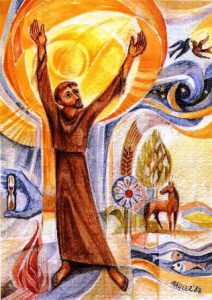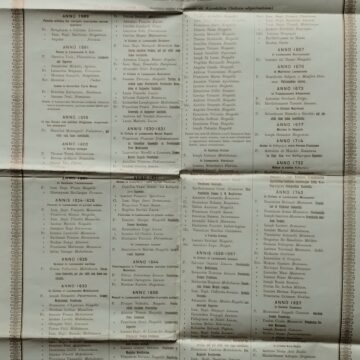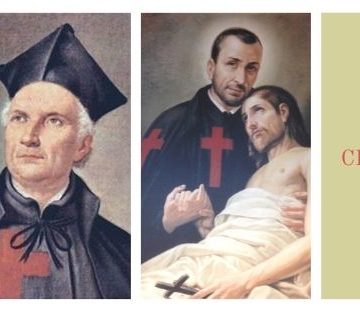 Between Camillus de Lellis and Francis of Assisi there were affinities of an external character that were purely fortuitous but also others of an internal character. The fact that both of them came from lives of gambling and war, were converts, experienced illnesses, and had to deal with the same problem of adapting what was ideal to historical-cultural situations and in part abandoning its integrity, were not elements that in themselves suggest that they had a closeness of spirit. Not even the radical way in which they offered their messages can be seen as something that was peculiar to them.
Between Camillus de Lellis and Francis of Assisi there were affinities of an external character that were purely fortuitous but also others of an internal character. The fact that both of them came from lives of gambling and war, were converts, experienced illnesses, and had to deal with the same problem of adapting what was ideal to historical-cultural situations and in part abandoning its integrity, were not elements that in themselves suggest that they had a closeness of spirit. Not even the radical way in which they offered their messages can be seen as something that was peculiar to them.
Their comparison becomes more stimulating as soon as one takes into consideration the features that mark out their spirituality: the crucifix, the sick, poverty, joy and universal brotherhood. Indeed, the explicit references of Camillus to Francis, whom he recognised as a model, are not sufficient to understand whether what motivated his soul was of a Franciscan impress. The nearness of these two men should be looked for above all in their spontaneous approaches which were devoid of intentional references to examples. Therefore, beyond a collection of biographical facts or episodes that are analogous in a literal sense, the comparison should be shifted onto the humus from which arose certain reactions in response to external interpellations.
It could be useful at the level of comparison to observe that Camillus was introduced to religious life in the friary of the Capuchins which had an unmistakable Franciscan spirit. And yet this particular, however valuable it may be, also remains an external fact that does not suggest that Camillus felt Franciscan. The role formative experiences shapes but does not create a person’s nature. The kind of sensibility that an individual has is decided by his nature. A legitimate affirmation of a Franciscan approach in Camillus can only come from an analysis of his ideals and his feelings rather than from the testimony of individual facts or sayings.
A comparison, in addition to likenesses, offers differences of a psychological and cultural character. Around the figure of Camillus we encounter a scenario which was everything but idyllic like the landscape of Assisi where Francis worked. From Assisi, although it was afflicted by wars, he moved to Rome during the end of the sixteenth and the beginning of the seventeenth centuries. This was a Rome of fevers, flooding, famines, with plague and places of hopelessness ignored by official history but which Camillus revealed in all their nakedness. His determination was like that of a tenacious and obstinate wrestler whereas Francis had a more relaxed character and was ready to sing like a minstrel.
Camillus bound his life to the cause of sick people and he would never detach himself from them. After entering hospitals, only his death would lead him to leave them. His activities had only one horizon and they were moved by a single great passion – the person of the suffering. He repeatedly confessed: ‘I want to serve and minister to the poor people of Christ, because this is the whole of my wish and purpose’ (Spir. 59). ‘do not believe that I have other thoughts in my mind than serving the sick and the poor and dying for them’ (Spir. 52)
And yet in him there was a soul that offered the gospel according to the Franciscan spirit. The love of Camillus for the sick, the attention that he paid to the crucifix, his spirit of poverty and his very way of relating to nature belong to the river-bed of the Franciscan flow.
















Camillians on Facebook
Camillians on Twitter
Camillians on Instagram